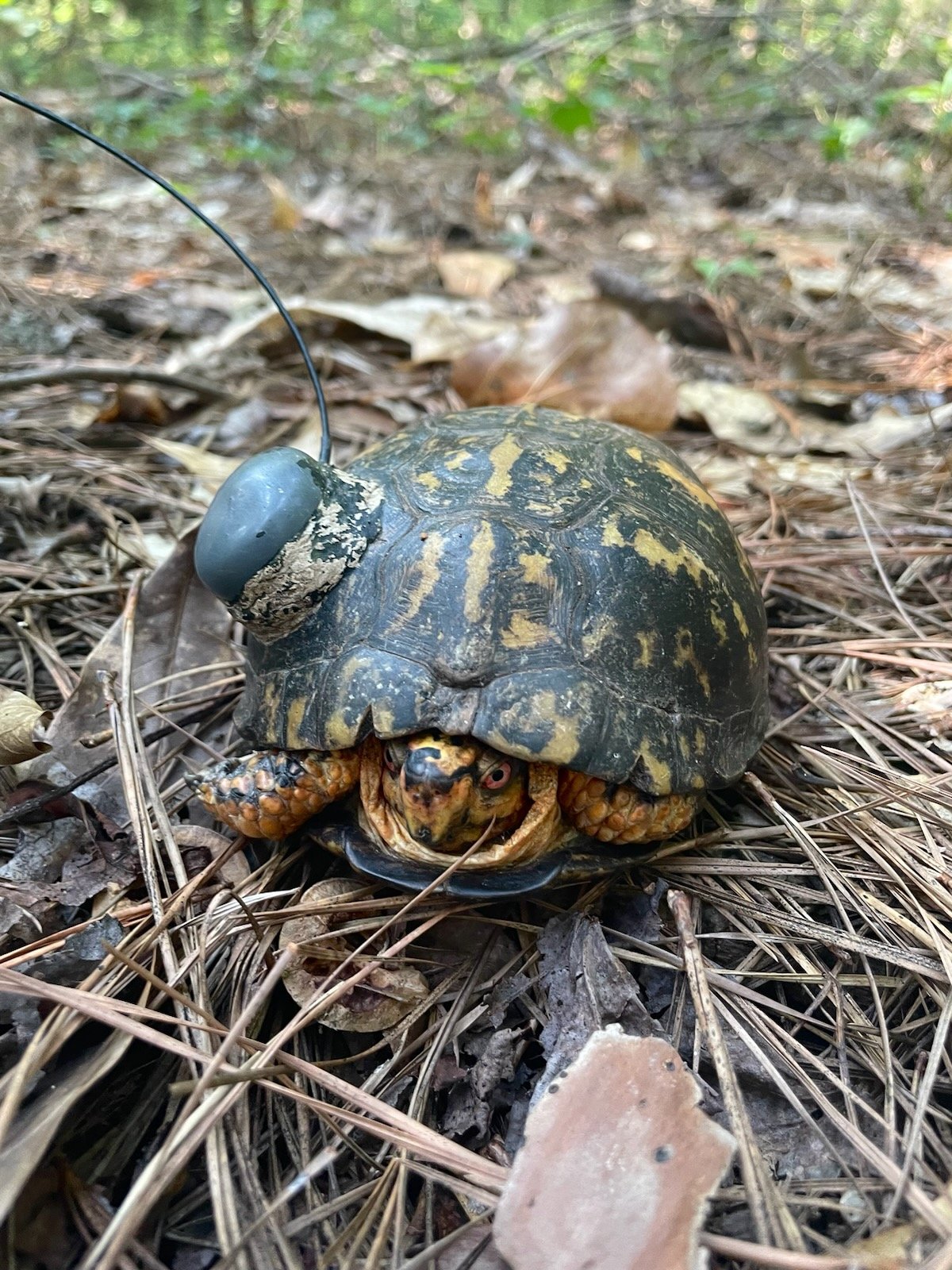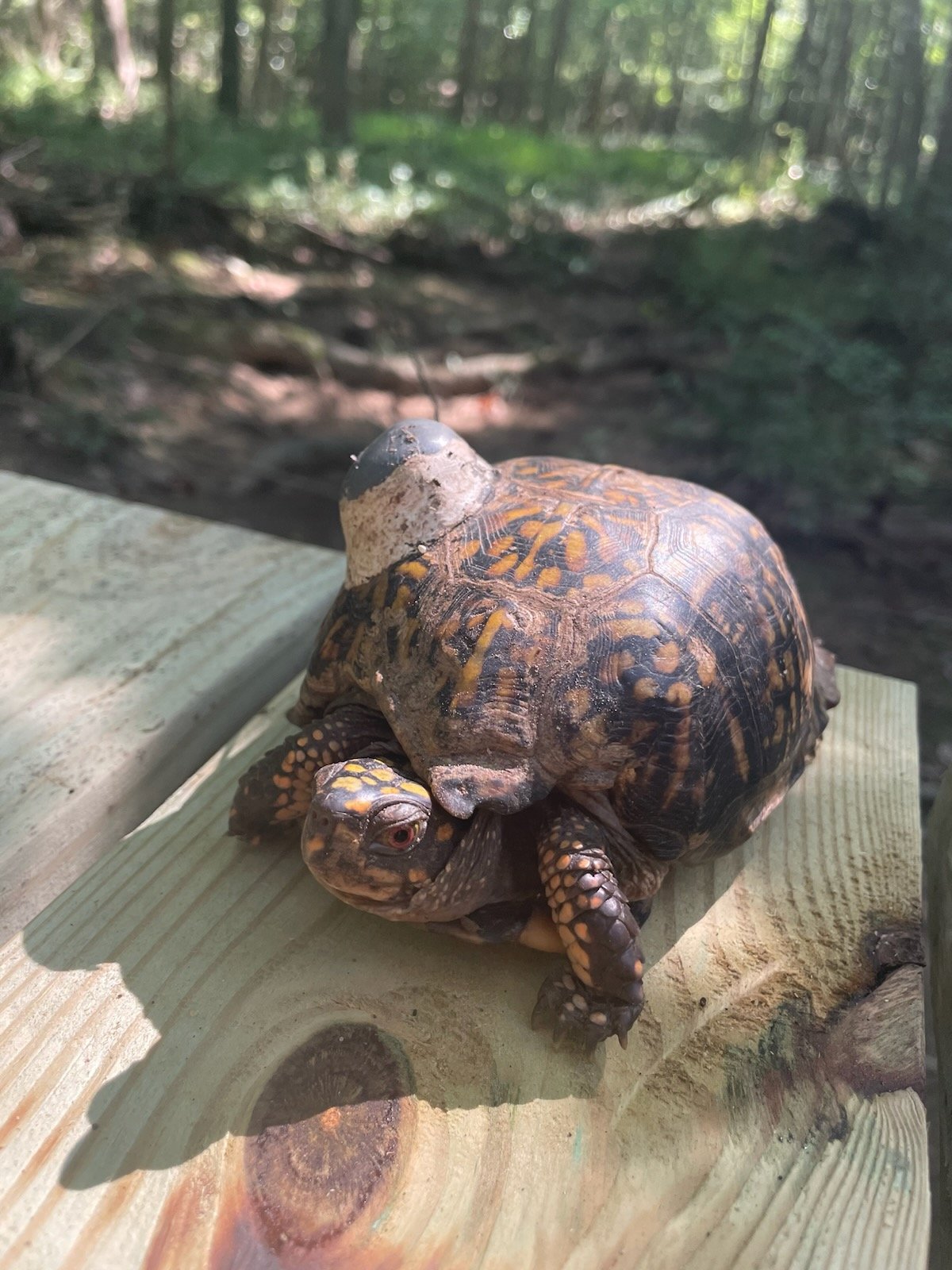BOX TURTLE RESEARCH
Where are the Turtles?
Our ambassador turtles are back outside! Be sure to visit our outdoor turtle enclosures to learn more about box turtles and how you can get involved with studying NC’s state reptile.
Independent CITIZEN SCIENCE Opportunities
Why study box turtles?
The eastern box turtle (Terrapene carolina carolina) is in decline. They are currently classified as Vulnerable by the IUCN Red List, meaning that their population size is decreasing and the species is at risk of extinction in the wild.
The eastern box turtle, North Carolina’s state reptile, is in decline across the state. As of 2011, the IUCN has classified eastern box turtles as a vulnerable species (i.e. likely to become endangered unless circumstances are improved). We need your help to find, photograph, and monitor eastern box turtles in or near neighborhoods, your place of work, and other urban areas!
What’s a Shellfie?
A Shellfie is a close-up photo of a box turtle’s shell. With each Shellfie taken and uploaded to a scientific database, scientists can learn more about the behavioral patterns, movements, and physical variations of eastern box turtles.
HOW TO TAKE A SHELLFIE
Take two or more photos centered directly over the turtle. Take the photos as up close as possible with the entire top of the shell still visible.
You can also take additional photos of the turtle from slightly different angles, but still overhead.
Do not include non-standardized objects for scale
Do not take the photo from any angle other than above
Do not take the photo from too far away
How to submit your turtle photos
iNaturalist and HerpMapper are two amazing citizen science databases where you can submit your turtle photos. Researchers use the data submitted to track the ranges and movements of several species.
iNaturalist can be downloaded for IOS and Android that can be used to submit any plant or animal observations. Submit your photos and watch as experts in your area help ID your unique find! Have a young naturalists? Seek by iNaturalist turns exploring our world into a game. Participate in challenges, submit photos, and help researchers build a biological inventory in your area.
HerpMapper can be downloaded for IOS and Android that can be used to submit any reptile or amphibian observations. HerpMapper is a great option if you are an avid herper and want to help researchers collect data on our scaly or slimy friends.
How do I know if it’s a box turtle?
Patterns and coloration will vary, but eastern box turtles have clawed feet (not as webbed as aquatic turtles) and should be able to close up in their shell, even if they aren’t doing so when you find them.
Box turtles can close up entirely inside their shell, like this one is preparing to.
Box turtles may have brown, pale red, or bright red eyes. Their shell and body can be brown, yellow, red, and/or orange.
Radio Telemetry
There are currently 6 wild turtles living at Leigh Farm Park outfitted with radio transmitters. Each week, the turtles are located using a receiver and data is collected on their location, behavior, and the weather.
Take a closer look at each turtle’s movements throughout the park
GIS Story Map created by Lauren Rooney, PWC Conservation Intern 2023.
Mark-Recapture
To expand our monitoring efforts, we also use a mark-recapture survey method to study more turtles in the park in partnership with the Box Turtle Connection, a long-term study on box turtles in North Carolina . When a new turtle is found, it is given a small, non-invasive mark that allows us to identify it as a unique individual.
To date, we have marked over 250 eastern box turtles and are always adding more!
Measuring shell height
How can the data be used?
Learn more about what’s been happening with box turtle populations across NC in this article by Roe, Graeter, LaVere, and Somers (2021):





















